Why eInvoicing Isn’t Just Emailing a PDF
If your business sends PDF invoices by email, it might seem like you’re already doing eInvoicing.
That’s a common misconception.
While PDFs are digital files and email is electronic, true eInvoicing is a completely different process. It’s like comparing writing a cheque to using internet banking; both move money, but only one is fast, secure, and automated.
eInvoicing involves sending invoice data directly from one accounting system to another through certified access points, using the Peppol standard. This structure enables real-time delivery and automated processing, with no need to open an email or manually re-enter data.
With a PDF invoice, your customer’s team has to extract key details like PO numbers and totals manually. That introduces errors, delays, and costs. It’s estimated that processing a PDF invoice costs around $23 per transaction. With eInvoicing, that cost drops to under $10, thanks to automation and data validation.
Even better, eInvoices often qualify for faster payment. In New Zealand, government departments have committed to paying valid eInvoices within 10 business days. That’s a major cash flow advantage, especially for suppliers serving the public sector.
Most major cloud accounting platforms in Australia and New Zealand already support eInvoicing, making it easier than ever to get started.
In summary:
PDF invoicing may feel digital, but it’s not eInvoicing. If you want faster payments, fewer errors, and lower processing costs, now’s the time to make the switch.
Want to see how eInvoicing fits into your current workflow?
Talk to Acume; we’ll show you how to simplify your invoicing and get paid faster.
